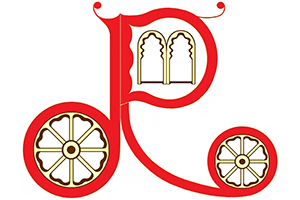COASTAL TOWNS, MOUNTAINS & LAKES OF WASHINGTON STATE; PACIFIC NORTHWEST, USA
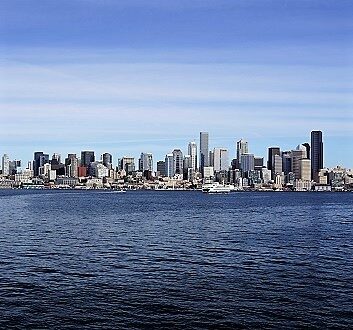
USA, Pacific Northwest, Seattle
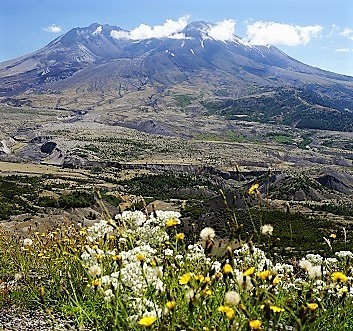
USA, Pacific Northwest, Mount St. Helens
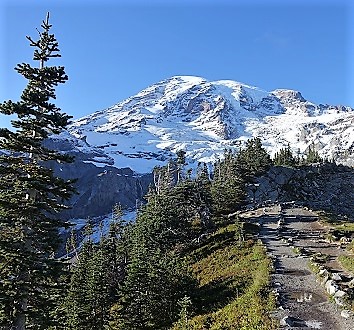
USA, Pacific Northwest, Mount Rainier
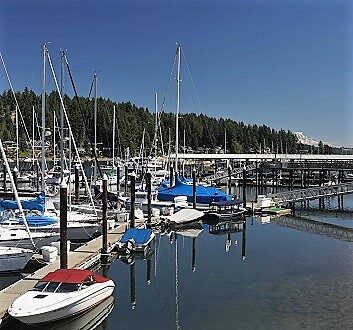
USA, Pacific Northwest, Gig Harbour
Travel Itinerary
Day 1 – Arrive Seattle, USA
There are direct flights to/from Seattle, USA from the major US hubs, including New York, Newark, Boston, Chicago, Washington D.C., Miami, Houston, San Francisco and Los Angeles. After arriving at the Seattle-Tacoma International Airport, we pick-up the rental car and drive around 30 minutes to our hotel. We visit Carillon Point and have dinner in our hotel.
Note: Our Pacific Northwest, USA Itinerary takes place during the summer, ensuring plentiful sunshine and spectacular scenery. Our itinerary may be extended and combined with a 7-Day Alaska Cruise departing from Seattle.
Day 2 – Seattle
We drive 15 minutes across Lake Washington to Seattle. We park in the Target Garage, located on Union Street between 2nd Ave and 1st Ave. We visit the nearby historic Pike Place Market and enjoy classic French pastries at Le Panier. We walk toward Elliot Bay and Alaskan Way to Argosy Cruises Harbor Tours at Pier 55-56, to take a one-hour cruise exploring the Seattle skyline, container-cargo port and shipyards. Afterward, we have lunch at Elliott’s Oysters at Pier 56, serving fresh fish and oysters from the Pacific Northwest. An afternoon tour options include taking a quick taxi or walking to the Space Needle and/or visiting the historic Pioneer Square and the underground museum. Early evening, we drive 15 minutes to the Nishino Restaurant, serving an excellent Japanese cuisine. After dinner, we drive back to our hotel.
Day 3 – Mount St. Helens
Early morning, we drive 3.5.hours to Mount St. Helens, an active volcano located within the Gifford Pinchot National Forest. The cataclysmic eruption of Mount St. Helens caused a massive landslide, drastically altering its landscape. The Mount St. Helens National Volcanic Monument is an 110,000-acre area with research, education and recreation areas. We drive on State Route 504, stopping to photograph the beautiful scenery at several viewpoints. We arrive at the Johnston Ridge Observatory, the visitor center situated at the center of the volcano’s eruption. We follow a short trail connecting the Johnson Ridge Observatory to Loowit Viewpoint, admiring magnificent views of the crater. In the afternoon, we drive back on State Route 504 and stop at the Cold Water Lake Recreation Area. We walk toward a wooden boardwalk, a perfect location for a picnic. Note: We recommend buying food/sandwiches on the way to Mount St. Helens. Late afternoon, we drive back to our hotel and have dinner at Le Grand Bistro Americain.
Day 4 – Gig Harbor
Our excursion starts with an over 1-hour drive to Gig Harbor. The Gig Harbor Bay creates a beautiful setting for the town’s historic waterfront lined with boutiques and restaurants. We walk along the bay toward the Austin Estuary Park, the protected wetland and stream buffer area. We visit the Harbor History Museum that houses a collection of over 29,000 artifacts related to the Gig Harbor-Peninsula history. Afterward, we walk to a nearby waterfront restaurant, Anthony’s at Gig Harbor that serves Pacific Northwest seafood cuisine. After lunch, we walk down to the dock at Anthony’s at Gig Harbor Restaurant, starting point of the boat tours provided by Destiny Harbor Tours. A multi-hour tour on Puget Sound offers lovely coastal views. At the end of the day, we drive back to our hotel. We dress up to dine at Canlis Restaurant, a fine-dining restaurant in Seattle. Note: Canlis, Seattle’s most upscale restaurant, books usually months in advance.
Day 5 – Mount Baker
In the morning, we drive 3 hours north to Mount Baker-Snoqualmie National Forest. Mount Baker is an active volcano in the Cascade Mountain Range that rises to 10,778 feet in elevation. Mount Baker Highway (Route 542) is a beautiful route that leads to the Heather Meadows Visitor Center, a starting point for a variety of hiking trails. The Artist Point trail is a multi-mile loop trial that follows along picturesque meadows and offers panoramic views of the snow-capped mountain peaks. We follow the hiking routes, enjoy a picnic and admire views of Mount Baker and Mount Shuksan. Afterward, we drive back to our hotel and dine in Como, Italian restaurant in Carillion Point.
Day 6 – Whidbey Island
In the morning, we drive 40-minutes to the Mukilteo Ferry Terminal to take a 20-minute ferry to the Clinton Ferry Terminal on Whidbey Island. After disembarking the ferry, we drive around 45 minutes north to the Ebey’s Landing National Historical Reserve. Scenic hiking trails overlook several-mile long beach and magnificent bluffs. Afterward, we drive back 40 minutes south toward the waterfront village of Langley, stopping on the way at the Greenbank Farm to degust their famed fruit pies. In Langley, we have lunch at the Prima Restaurant, explore the town’s art galleries and shops, and promenade along the Saratoga Passage. Late afternoon, we drive 15 minutes to the Clinton Ferry Terminal to take the return ferry to Mukilteo, then drive back to Kirkland. We have dinner at Café Juanita, located in the Juanita neighborhood of Kirkland, then drive 10 minutes to our hotel.
Day 7 – Mount Rainier National Park
Early morning, we drive south around 3.5 hours to Mount Rainier National Park to explore the tallest volcano in the Cascade Mountain Range. We take Route I405 South to Route 167 South to Route 161 South to Route 7 to Route 706 that connects to Paradise Road and Paradise Valley Road, and arrives at the Henry M Jackson Visitor Center. The visitor center is located in the Paradise area of the park. The Panorama Point via the Skyline and Golden Gate Trails is a strenuous multi-mile round-trip hike. The hike starts near the Paradise visitor center and leads toward the Nisqually Glacier and Mount Rainier. After the hike, we walk to Paradise Inn, situated near the visitor center, to sample the Pacific Northwest cuisine. Note: Paradise Inn is open from Mid-May to late September. Afterward, we drive a few hours back toward Kirkland. We have dinner at the Seastar Restaurant and Raw Bar in Bellevue, a town located at a 15 minutes’ drive from our hotel.
Day 8 – Seattle, USA Departure
We depart our hotel after breakfast and drive to Seattle-Tacoma International Airport to take our flight home.
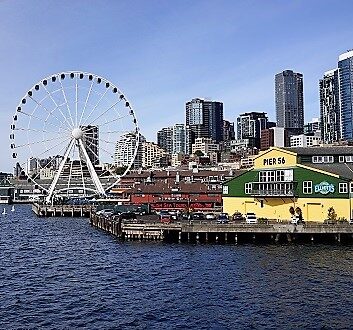
USA, Pacific Northwest, Seattle Waterfront
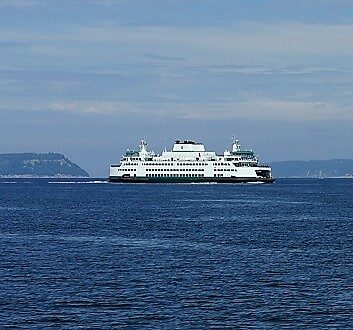
USA, Pacific Northwest, Ferry to Whidbey Island
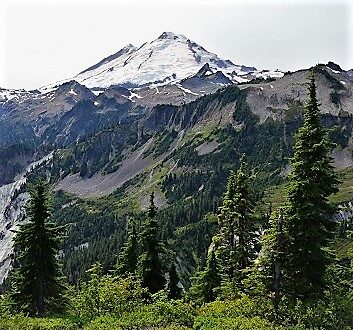
USA, Pacific Northwest, Mount Baker
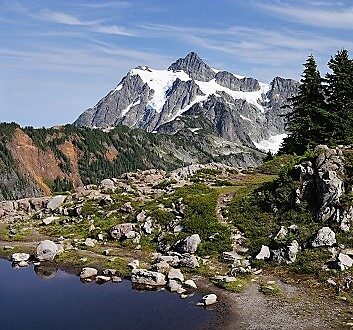
USA, Pacific Northwest, Mount Shuksan
Special Places
Washington State, USA – Washington State, located at the northwestern corner of the USA, borders the Canadian Province of British Columbia to the north, Idaho to the east, Oregon to the south and the Pacific Ocean to the west. Washington State comprises diverse regions: Olympic Mountains, North Cascades, Okanogan, Willapa Hills, Puget Lowlands, Columbia Basin, Portland Basin, South Cascades and Blue Mountains. Puget Lowlands cover the area between the Cascades Mountain Range to the east, the Olympic Mountains to the west, and extend north of San Juan Islands and south of Puget Sound. The state’s main seaports and the city of Seattle are situated in the Puget Lowland region. Puget Sound is an estuary of the Pacific Ocean and is part of the Salish Sea. Puget Sound connects the Pacific Ocean to the Strait of Juan de Fuca, the international boundary between Canada and the United States. North of the Strait of Juan de Fuca, the San Juan Island Archipelago consists of 172 islands, including the two largest islands: San Juan Island and Orcas Island. The islands’ picturesque harbors, rocky coastlines and pebble beaches covered by driftwood are a favorite tourist destination, accessible either by water (Washington State Ferry or private boats) or by air (seaplanes). Sea kayaking is an unforgettable adventure while whale watching tours offer close encounters with the resident pods of Orca Whales. In the northwest corner of the state, the Olympic Peninsula is bordered by the Pacific Ocean, the Strait of Juan de Fuca and the Hood Canal, and encompasses the Olympic Mountains. The Olympic National Park protects an expansive wilderness area, the Olympic Mountains with its tallest Mount Olympus at the elevation of 7,980 feet and the Hoh Rain Forest featuring giant trees. A 73-mile Olympic Coast boasts marvelous beaches covered with massive driftwood logs, remarkable sea stacks and preserved Native American culture. Along Highway 101, Ruby Beach and Kalaloch symbolize the wild and rugged beauty of the Pacific Coast. Inland of Washington State, Mount Baker, Glacier Peak, Mount Rainier, Mount Adams and Mount St. Helens are active volcanoes in the Cascade Mountain Range. The five active volcanoes are part of the Ring of Fire, a horseshoe-shaped belt around the rim of the Pacific Ocean and the location of active and dormant volcanoes and earthquake activity. East of the Cascade Range, Eastern Washington consists of desert terrain, farmlands of the Yakima Valley, the Walla Walla Wineries, the Juniper Dunes Wilderness and a wildlife refuge. The widely diverse topography of Washington State makes it an exceptionally beautiful and captivating destination. The cultural landscape of the Pacific Northwest is equally fascinating. Native Americans lived in Puget Sound, the Washington Coast and the Inland Plateau regions for thousands of years. The natural resources of the Pacific Northwest were used for shelter, transportation, food, clothing and handcrafts. Across the region, the Native American culture is celebrated in works of art, architecture, cuisine and traditions.
Seattle – The city of Seattle was built on indigenous land between Puget Sound and Lake Washington. The Lake Washington Ship Canal connects Puget Sound to Lake Union and Lake Washington, enabling boats and kayaks to travel through the navigation locks. The establishment of transcontinental railways contributed to the city’s industrial development, primarily timber, mining, fishing and shipbuilding industries. Over time, Seattle grew into a thriving cultural metropolis, a major tech hub and the gateway to Asia, Hawaii, Canada and Alaska. Seasonal weekly cruises to Alaska depart at Seattle’s Bell Street Pier Cruise Terminal at Pier 66 and Smith Cover Cruise Terminal at Pier 91. The famed Pike Place Market is a century-old farmer’s market with fresh seafood and produce shops, restaurants and retail stores. Le Panier, situated near the market, is a great French bakery making delicious breads and classic French desserts. The nearby underground museum and Pioneer Square are Seattle’s historic districts. Space Needle, constructed for the 1962 Seattle World’s Fair, is a saucer-shaped observation tower offering 360-degree views of Seattle and Puget Sound. The Alaskan Way route along Elliot Bay is home to the future Waterfront Park, a 20-acre cultural destination currently under construction. The Elliot Bay waterfront is the location of the Seattle Ferry Terminal servicing routes to Bremerton and to Bainbridge Island. The Argosy Cruises Harbor Tours at Pier 55-56 are one-hour cruises exploring the Seattle skyline, the container-cargo port, shipyards and mountain views. Elliott’s Oysters, a waterfront restaurant at Pier 56, serves fresh fish and oysters from the Pacific Northwest. The Seattle Great Wheel and the Seattle Aquarium are popular tourist attractions. The Victoria Clipper Terminal at Pier 69 runs a ferry system to Victoria Island in the Canadian Province of British Columbia. Seattle is a city of neighborhoods, waterways, beaches, urban parks, cultural spaces and abundant Starbucks cafés. A wide range of outdoor activities, cultural events and festivals celebrating ethnic diversity enhance the quality of life in Seattle.
Gig Harbor – Gig Harbor, a popular tourist destination, is located in the Gig Harbor Bay in Puget Sound. The picturesque town is located within close proximity to Tacoma, across the Narrows Bridge that spans the Tacoma Narrows strait and connects Tacoma to the Kitsap Peninsula. The Native Americans are the original inhabitants of the region. The white settlers arrived to Gig Harbor in 1867 from Sweden, Norway and Croatia. Sam Jerisich started a small scale fishing business. Settlers from Minnesota established the lumber business. The town’s economic growth was driven by commercial fishing, the lumber industry and the boat building industry. Gig Harbor, officially incorporated in 1946, boasts a historic waterfront along the harbor, lined with boutiques and restaurants. A walk along the Gig Harbor Bay leads to the Austin Estuary Park, a protected wetland and stream buffer area. The nearby Harbor History Museum houses a collection of over 29,000 artifacts related to the Gig Harbor-Peninsula history. The museum is working to preserve the 65-foot fishing vessel Shenandoah and Thunderbird. The scenery across the bay shows an attractive harbor filled with boats and a panorama of Mount Rainier. Anthony’s at Gig Harbor, a perfect dining venue for lunch or dinner, serves a superb Pacific Northwest seafood cuisine and overlooks the Gig Harbor Bay. In the summer, Destiny Harbor Tours offer group and private boat tours on Puget Sound. Visitors shall walk down to the dock of Anthony’s at Gig Harbor Restaurant and look for the starting point of the boat tours. A multi-hour tours offers a pleasing coastal scenery, lovely views of the Narrows Bridge and wildlife encounters.
Mount St. Helens – The Cascades are the mountain range in western North America. The Cascades extend northward from Northern California to the province of British Columbia in Canada. North Cascades cover the border between British Columbia in Canada and Washington State in the United States. The Cascade Volcanic Arc is the major range of volcanoes in the Cascade Range. Mount St. Helens is an active volcano located within the Gifford Pinchot National Forest in Washington State. On May 18, 1980, Mount St. Helens erupted, causing a massive landslide on the north face of the mountain. Volcanic debris, mudflows and thousands of trees covered the Johnson Ridge, Spirit Lake, Coldwater Creek and the North Fork Toutle River. The Mount St. Helens National Volcanic Monument, an 110,000-acre area established in 1982, serves as a research, education and recreation area. State Route 504, the main road to Mount St. Helens, offers various viewpoints, including the Elk Rock Viewpoint, the Castle Lake Viewpoint and the Loowit Viewpoint. The Johnston Ridge Observatory, the visitor center situated at the center of volcano’s eruption, shares the history of the mountain and overlooks a stunning landscape. A short trail from Loowit Viewpoint to Johnson Ridge Observatory offers magnificent views of the crater and the nearby patches of blooming wildflowers. Driving back on State Route 504, the Cold Water Lake is an ideal place to enjoy a picnic, walk on the boardwalk and admire the tranquil scenery.
Mount Baker – The Mount Baker-Snoqualmie National Forest borders the Cascades National Park to the east and the Canada-USA border to the north. The Mount Baker Wilderness, a designated vast wilderness area, surrounds Mount Baker, an active volcano in the Cascade Mountain Range. Mount Baker is covered with snow and glacier, and rises to 10,778 feet in elevation. Scenic hiking trails run along the alpine meadows, streams, rivers, old-growth forests and mountain peaks. Mount Baker Highway (Route 542) is a beautiful route that leads to the Heather Meadows Visitor Center, a starting point for a variety of hiking trails. Artist Point at an elevation of 5,140 feet offers sweeping views of Mount Baker and Mount Shuksan. The Artist Point trail is a multi-mile loop trial that follows along picturesque meadows and offers panoramic views of the snow-capped mountain peaks. A walk to Picture Lake reveals forested wilderness and the magnificent Mount Shuksan. The Fire and Ice trail follows along fields of alpine wildflowers and blueberries. The Mount Baker-Snoqualmie National Forest is a summertime hiking paradise revealing a rugged beauty of mountainous terrain and is a popular wintertime skiing and snowboarding destination.
Mount Rainier – The Mount Rainier National Park was established in 1899 in the west-central part of Washington State on a 236,380 acres of land. The expansive land has historic significance for the indigenous people in the Pacific Northwest. The park’s topography encompasses old-growth lowland forests, wildflower meadows, lakes, rivers and magnificent glaciers. Mount Rainier is an active volcano, the tallest volcano in the Cascade Mountain Range, at a height of 14,410 feet. It is surrounded by a spectacular harmony of nature. The southwest part of the park is accessed via Route 706 that connects to Paradise Road and Paradise Valley Road, and arrives at the Henry M Jackson Visitor Center. The visitor center is located in the Paradise area of the Mount Rainier National Park. Situated within walking distance to the visitor center, the Paradise Inn is a historic lodge open from Mid-May to late September. The Paradise Inn is an ideal dining venue to sample traditional Pacific Northwest cuisine and enjoy beautiful views. The Paradise Area Trails comprise easy, moderate and strenuous trails starting at the foothills of Mount Rainier. The Panorama Point via the Skyline and Golden Gate Trails is a strenuous multi-mile round-trip hike. The hike starts near the Paradise visitor center and traverses wildflower meadows, streams and waterfalls. Visitors encounter stunning views of the surrounding wilderness, the Nisqually Glacier, the snow-capped Mount Rainier and the Tatoosh Mountain Range. The Mount Rainier National Park serves as a habitat to wide variety of plants and wildlife, including black bears, mountain goats, deer, marmots and different species of birds.
Whidbey Island – Island County in the western part of Washington State includes Whidbey Island, Camano Island and a few smaller islands. Surrounded by Puget Sound, Whidbey Island is a long linear island overlooking the San Juan Islands on the northern part of the island. The Mukilteo Ferry Terminal, located north of Seattle, offers a 20-minute ferry ride to the Clinton Ferry Terminal on Whidbey Island. A 15 minutes’ drive from the Clinton Ferry Terminal leads to the waterfront village of Langley. Art galleries, quaint shops, restaurants and cafes line the town’s main street. The Inn at Langley, a waterfront boutique hotel, overlooks the Saratoga Passage, a portion of the Puget Sound separating Whidbey Island and Camano Island. The restaurant at the Inn at Langley offers excellent multi-course dinners on Fridays, Saturdays and Sundays year-round. Multiple Washington State Parks and the Ebey’s Landing National Historical Reserve are located on the island. Ebey’s Landing covers a beach several miles long, hiking trails and magnificent bluffs. The Deception Pass State Park, located on the northern part of Whidbey Island and the southern part of Fidalgo Island, covers multi-thousand acres of forested land, natural sand dunes and rugged coastline. The Deception Pass Bridge connects Whidbey Island to Fidalgo Island, offering spectacular coastal views. A 15 minutes’ drive north of the park, Anacortes is a premier destination for Whale Watching Tours. The boat tours explore the beautiful Puget Sound, a rich marine ecosystem and the natural habitat for the Southern Resident killer whales (Orcas). Driving through the island, the Greenbank Farm is a great place to enjoy regional cheeses, wines, fruits and famed fruit pies.
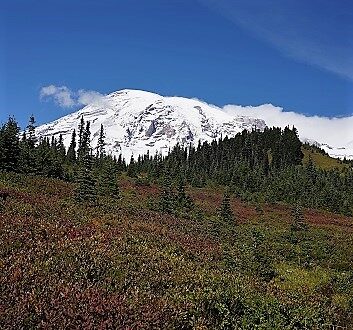
USA, Pacific Northwest, Mount Rainier National Park
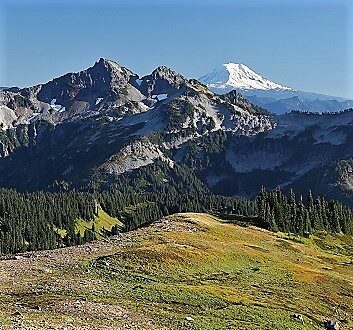
USA, Pacific Northwest, Mount Rainier National Park
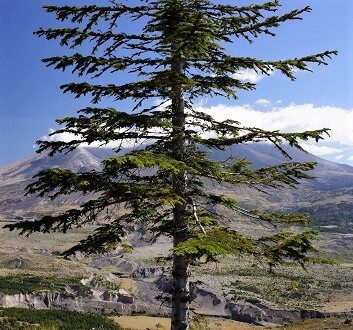
USA, Pacific Northwest, Mount St. Helens National Volcanic Monument
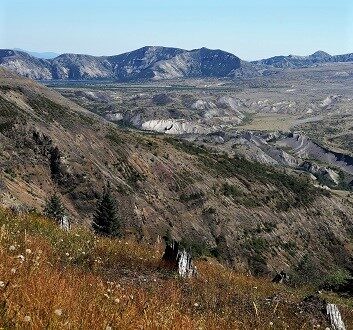
USA, Pacific Northwest, Mount St. Helens National Volcanic Monument
Favorite Adventures
National Parks & Monuments – Washington State, also known as the Evergreen State, hosts three national parks: Mount Rainier National Park, Olympic National Park and North Cascades National Park. The Mount Rainier National Park was established in 1899 in the west-central part of Washington State. The park occupies 236,380 acres of land covered with old-growth lowland forests, wildflower meadows, lakes, rivers and magnificent glaciers. Mount Rainier is an active volcano and the tallest volcano in the Cascade Mountain Range, at the height of 14,410 feet. The North Cascades cover the border between British Columbia in Canada and Washington State in the United States. Mount St. Helens is an active volcano located within the Gifford Pinchot National Forest in Washington State. On May 18, 1980, Mount St. Helens erupted, causing a massive landslide on the north face of the mountain. The Mount St. Helens National Volcanic Monument, an 110,000-acre area established in 1982, serves as a research, education and recreation area.
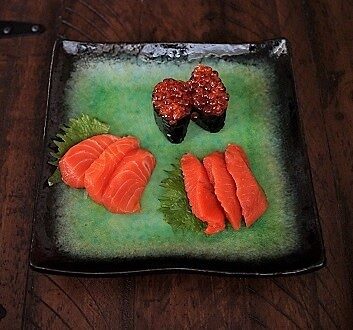
USA, Pacific Northwest, Salmon, Salmon Roe
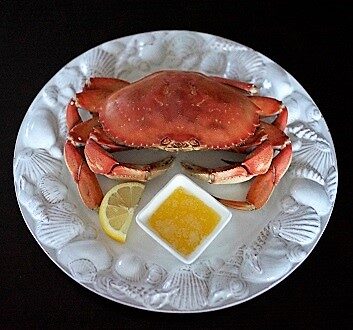
USA, Pacific Northwest, Dungeness Crab
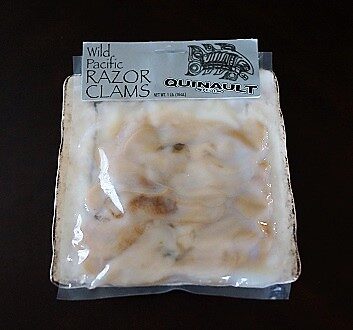
USA, Pacific Northwest, Pacific Razor Clams
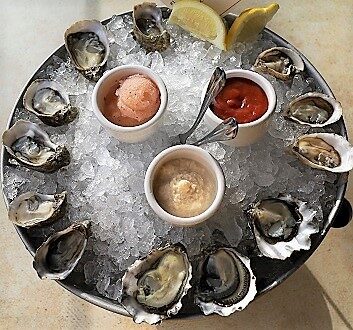
USA, Pacific Northwest, Oysters
Selected Cuisine
Pacific Northwest Cuisine – The Pacific Northwest comprises the northwestern USA, the Canadian Province of British Columbia and the surrounding coastal waters of the Pacific Ocean. The region boasts an abundant supply of diverse fish and seafood, agricultural products, wild mushrooms and fruit-bearing plants. The Pacific Northwest Cuisine is a merger of Native American culture and thriving immigrant communities. It focusses on locally grown produce, seasonally available ingredients and natural-organic foods. Regional ingredients include artisan cheeses, fine wines, edible seaweed, hazelnuts and fresh fruits and vegetables. The seafood-based cuisine features the freshest ingredients from the sea, including salmon, Dungeness crabs, razor clams, oysters, spot prawns, octopus, sea urchins and geoduck. The wild-caught Salmon in the coastal and inland waters of the Pacific Northwest boasts an exceptional flavor, and is of superior quality. Five species of Salmon inhabit the Pacific Northwest: Chinook (also known as King Salmon), Sockeye (also called Red Salmon), Coho (also called Silver Salmon), Chum (also called Dog Salmon) and Pink (also known as Humpback Salmon). Across the region, visitors may degust cedar planked grilled salmon, nut-crusted salmon filets, oven-baked salmon, salmon chowder, salmon lox on a bagel, smoked salmon, salmon poke, salmon sushi-sashimi and fresh salmon eggs. The Copper River Wild Salmon, available during a few weeks in May/June period, is a delicacy from the Copper River in Alaska with high content of omega-3 fatty acids and succulent taste. Dungeness Crabs are hard-shelled crustacean abundant near the Pacific Coast in Washington State. They have a grey or brown shell and good quantity of crab meat. Dungeness Crabs are a delicacy in the Northwest, preferred for its delicate and lightly sweet flavor. The Pacific Razor Clams are a delicious and meaty shellfish. During the razor clam season, thousands of people including whole families harvest the razor clams. They gather on sandy beaches, prepared with clam shovels or special clam guns, digging razor clams. The cold waters of the Pacific Northwest produce the freshest and the best Oysters. Five species of edible oysters are grown in Washington State, encompassing many varieties of each species grown on the beach or suspended in the water in nets. The Olympia Oysters, the only native oysters to Washington State, have a tiny and shallow shell, and a briny-sweet flavor. The Pacific Oysters have a large shell and a sweet-buttery flavor. The Kumamoto, originally brought from Japan, have a mid-size shell, and a nutty and subtle briny flavor. The Virginica Oysters, grown in Totten Inlet between Olympia and Shelton, have a clean flavor, slightly sweet and briny. The European Flat Oysters, also called Belons, have a flat shell and an intense flavor. The Pacific Northwest’s clean waters and nutritious natural habitat yield the finest quality oysters that vary in flavor, meat color and texture. The Pacific Northwest Cuisine is an eclectic collection of culinaria of the Pacific Northwest Native American Tribes, refined European-style cuisine, traditional and modern Japanese-style-cooking and food trucks specializing in ethnic fusion cuisine.
We select a few of our favorite fine dining establishments and casual restaurants in Washington State.
Canlis Restaurant (canlis.com), an award-winning fine-dining restaurant, serves a refined contemporary Pacific Northwest cuisine. Note: Canlis, Seattle most upscale restaurant, usually books months in advance.
Nishino Restaurant (nishinorestaurant.com), situated near the tranquil Washington Park Arboretum, offers excellent traditional and modern Japanese cuisine.
Elliott’s Oysters (elliottsoysterhouse.com), a waterfront restaurant situated on Pier 56, serves fresh seafood, including a wide variety of oysters from the Pacific Northwest.
Café Juanita (cafejuanita.com), located in Juanita neighborhood of Kirkland, creates high-end Italian cuisine with premium ingredients from the Pacific Northwest and Italy.
Carillon Point, an expansive space on Lake Washington, encompasses a beautiful marina, retail and office space, a waterfront hotel and restaurants. Le Grand Bistro Américain (bistrolegrand.com) serves French classics catered to a distinctly American Palate. Como (comousa.com) features Italian dishes inspired by the resort area around Lake Como in Northern Italy.
Seastar Restaurant and Raw Bar (seastarrestaurant.com), an elegant restaurant located in Bellevue, specializes in innovative seafood cuisine.
Anthony’s at Gig Harbor (anthonys.com/restaurant/anthonys-at-gig-harbor), a waterfront restaurant located in picturesque town of Gig Harbor, serves excellent Pacific Northwest Cuisine.
Prima (primabistro.com), located in Langley on Whidbey Island, is a lovely bistro featuring French inspired dishes made with fresh Pacific Northwest ingredients.
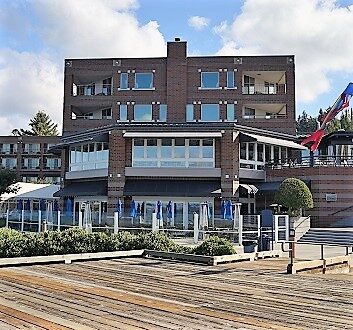
USA, Pacific Northwest, The Woodmark Hotel & Still Spa
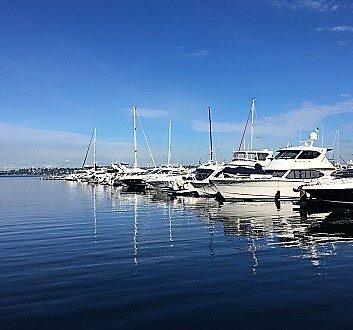
USA, Pacific Northwest, The Woodmark Hotel & Still Spa, Marina
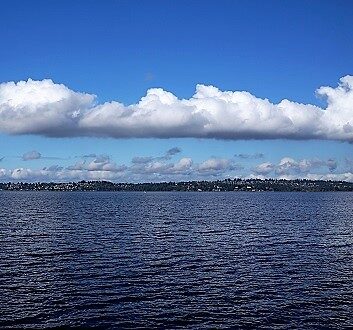
USA, Pacific Northwest, The Woodmark Hotel & Still Spa, Lake View
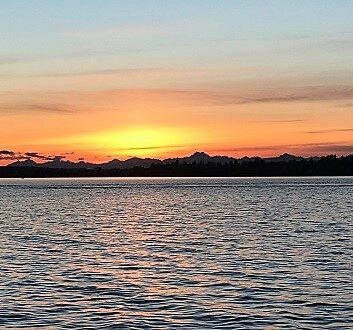
USA, Pacific Northwest, The Woodmark Hotel & Still Spa, Sunset
Preferred Accommodations
The Woodmark Hotel & Still Spa – The Woodmark Hotel & Still Spa is located on the shores of Lake Washington and within walking distance to the quaint town of Kirkland. The hotel has a collection of lakefront rooms and beautiful suites with views of Lake Washington and the Olympic Mountains. The lakeside Beach Café is a casual dining venue and the Carillon Kitchen features a refreshing lunch menu. The Carillon Point complex encompasses a picturesque marina and two waterfront restaurants: Le Grand Bistro Américain and Como. Guests may enjoy watersports, lakeside walking pathways and colorful sunsets. The Woodmark Hotel & Still Spa is a charming luxurious boutique hotel, an ideal lakeside retreat and a romantic wedding venue.
